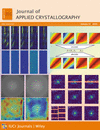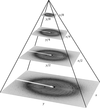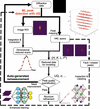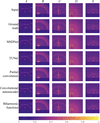issue contents
Artificial neural networks: applications in X-ray photon science and crystallography
Edited by Tomas Ekeberg
This virtual collection gathers together some recent articles that describe applications of artificial intelligence to solving problems such as data classification, data analysis and parameter estimation in structural science. [A related virtual collection of articles in other IUCr journals is also available at https://journals.iucr.org/special_issues/2024/ML/.]

Cover illustration: Applying artificial neural networks to classification of neutron diffraction [Hao et al. (2023). J. Appl. Cryst. 56, 519–525], X-ray photon correlation spectroscopy [Timmermann et al. (2022). J. Appl. Cryst. 55, 751–757] and serial crystallography data [Nawaz et al. (2023). J. Appl. Cryst. 56, 1494–1504], as well as data preprocessing in single-particle imaging [Bellisario et al. (2022). J. Appl. Cryst. 55, 122–132].
 access
access access
access access
access access
access access
access access
access access
access access
access access
access access
access access
access
 journal menu
journal menu





























